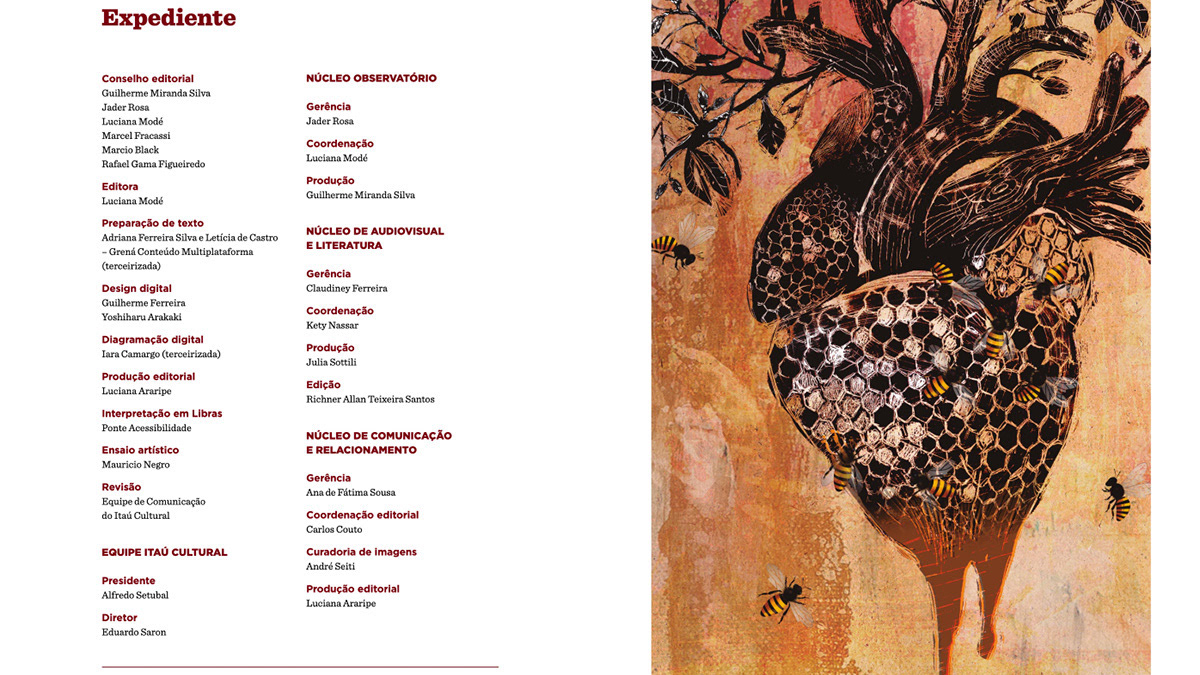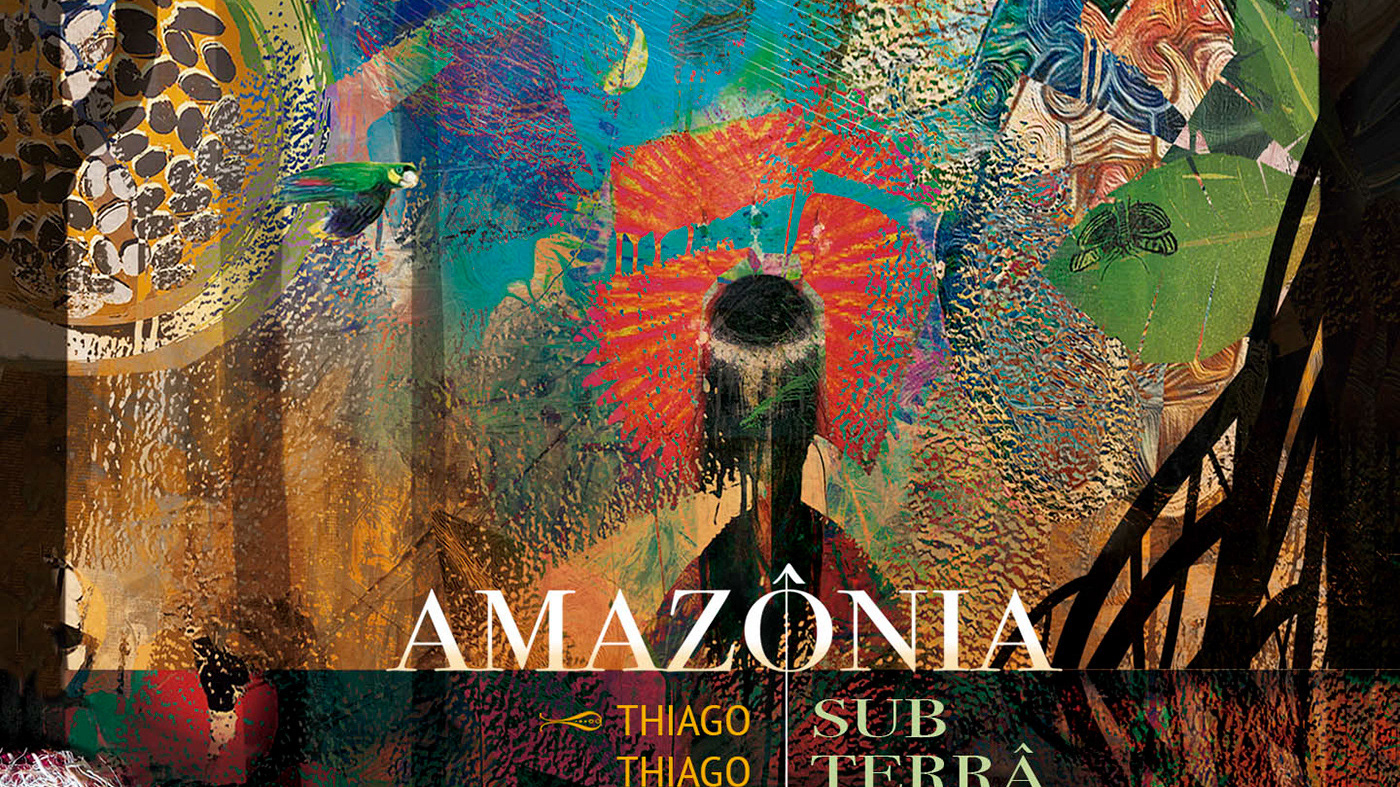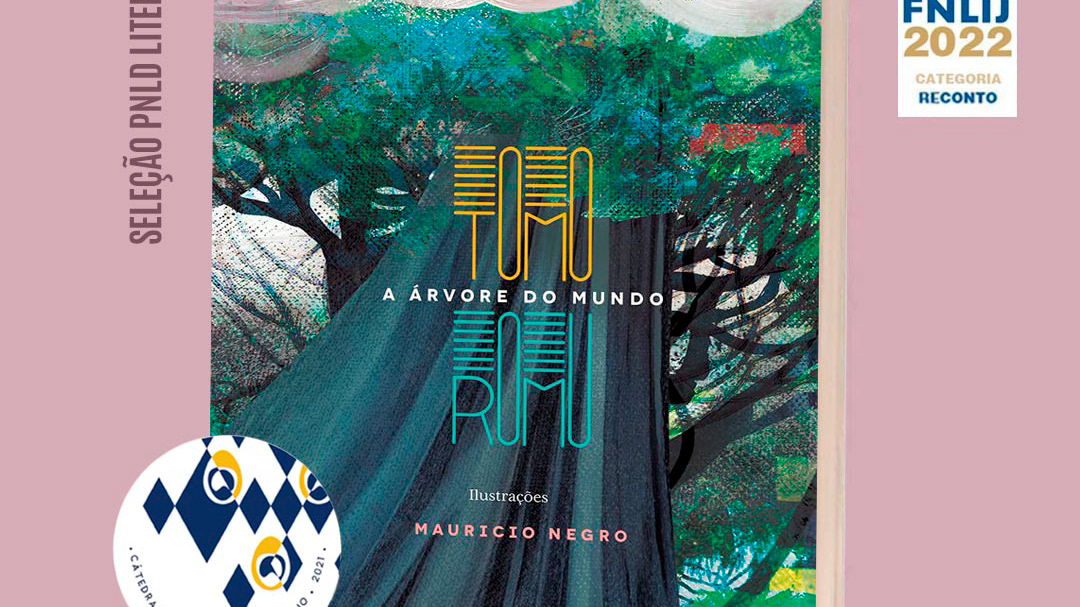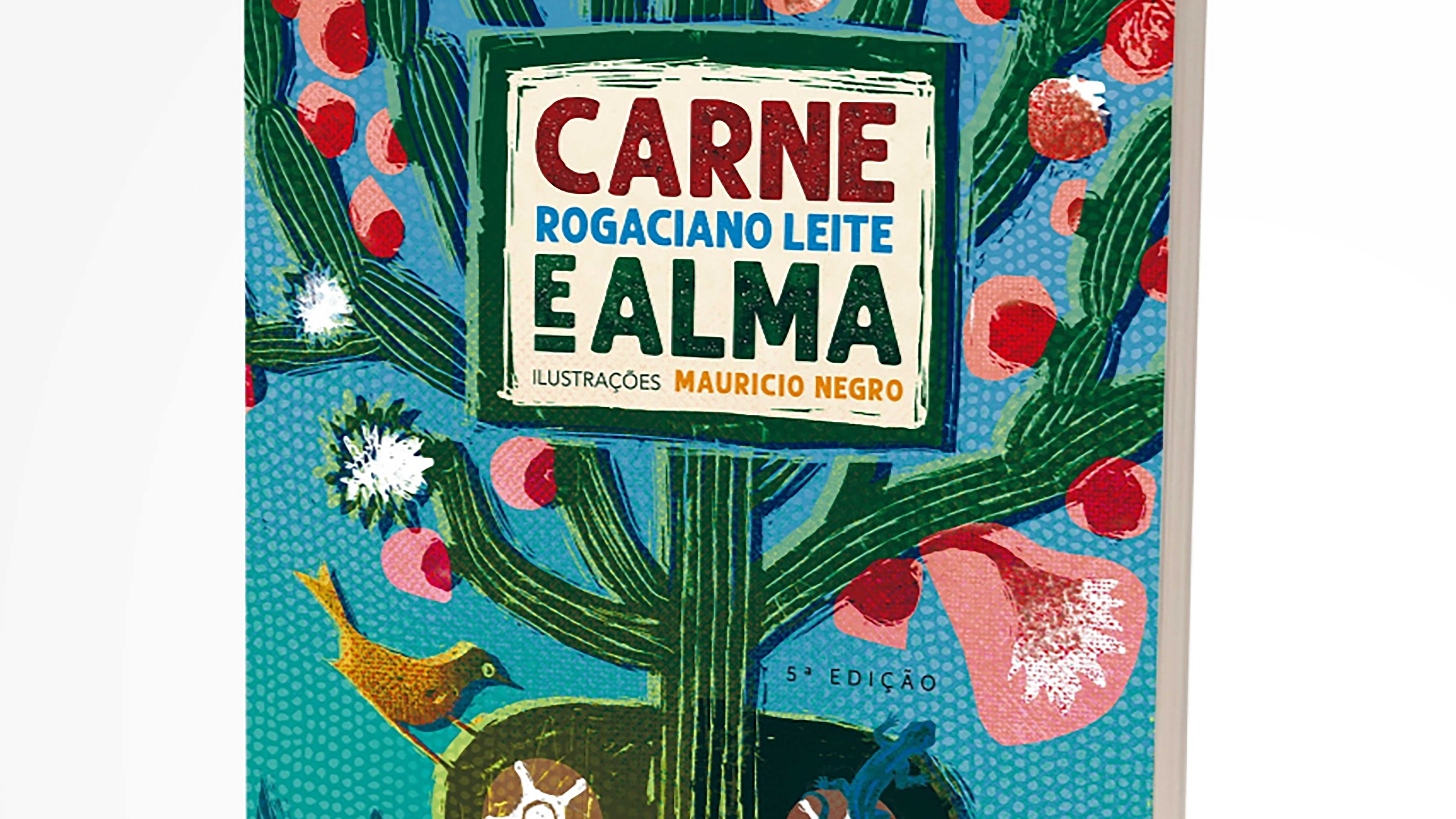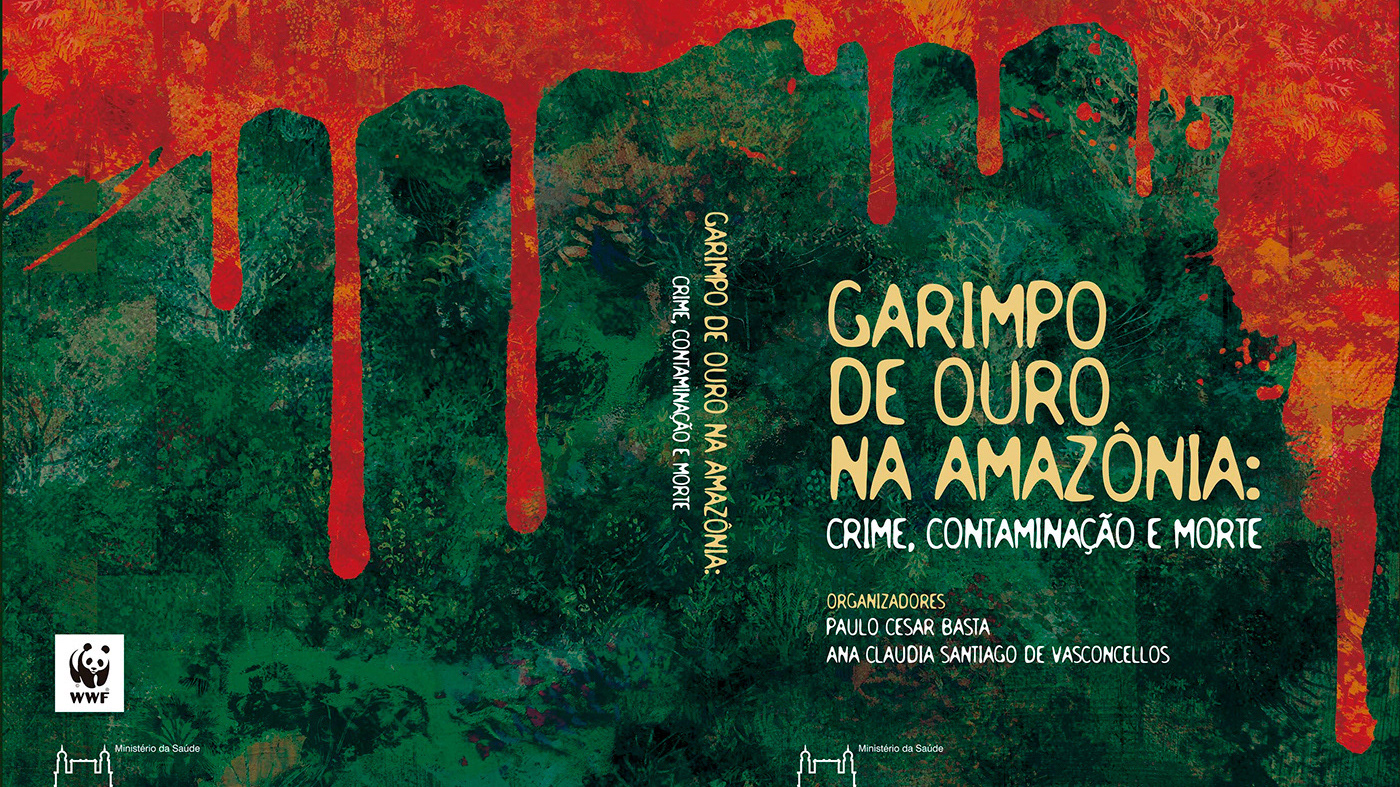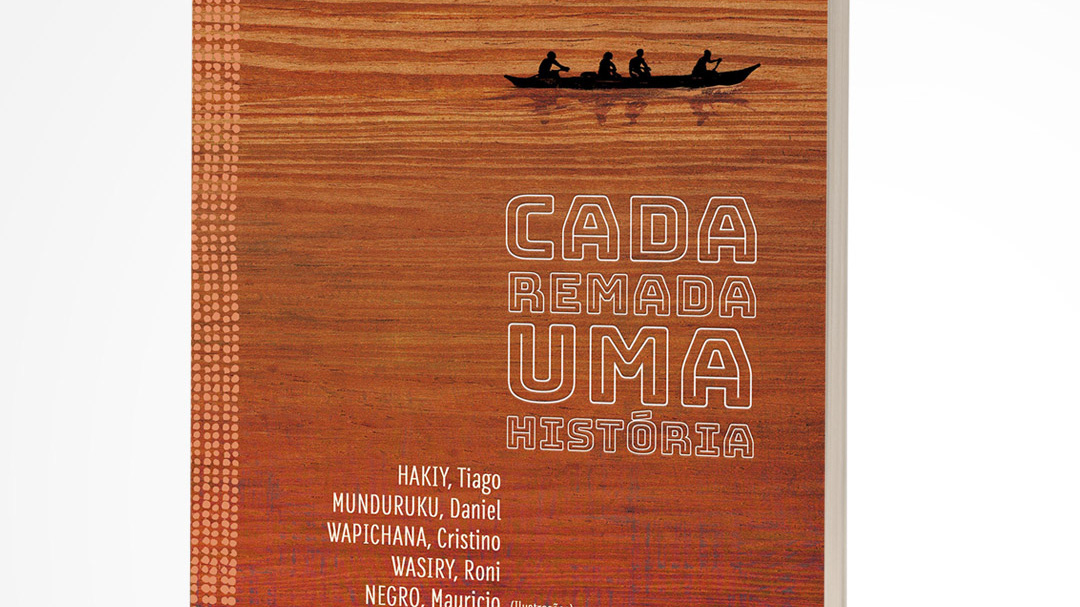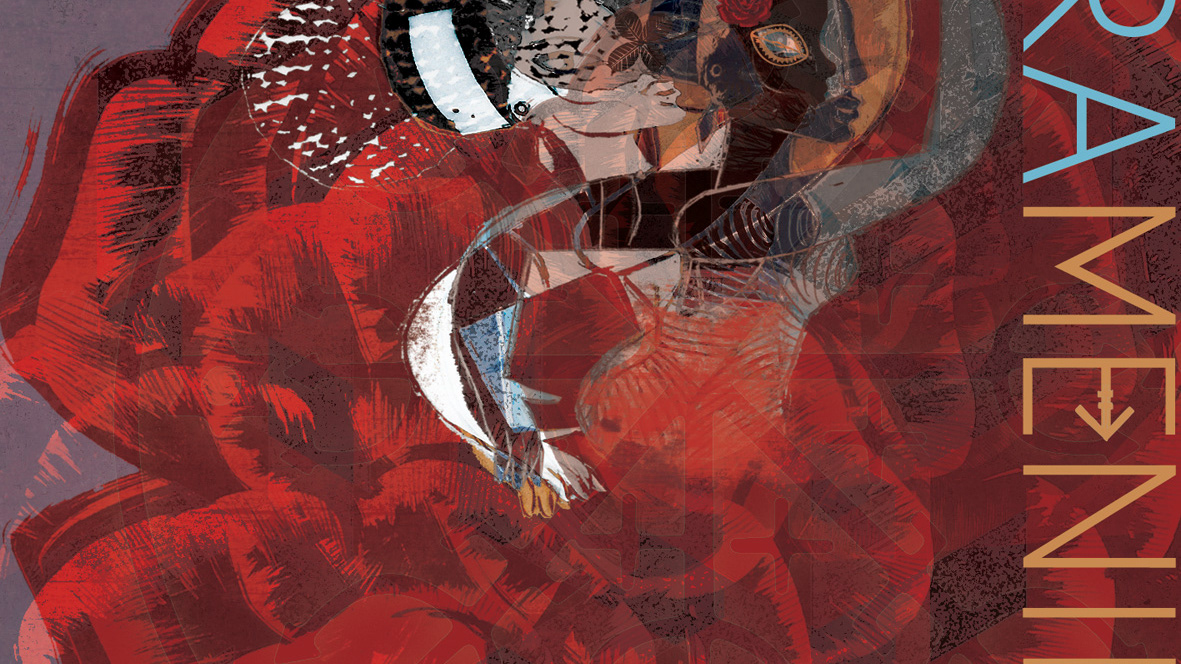2012_best Editorial illustration | XX SIDI Award | Salão Internacional de Desenho para Imprensa (PORTO ALEGRE, RS)
"Polifonia originária" foi a ilustração de capa da revista REVISTA Continente (# 133), uma edição dedicada às culturas indígenas. A imagem é uma homenagem ao povo Kambiwá, natural do Pernambuco, que ainda hoje vive no sertão (Ibimirim, Inajá, Floresta). Vestido com seu cateobá (saiote de de fibra de caroá), agitando o coité, um indígena kambiwá participa do ritual do praiá. do diadema circular em sua cabeça, feito uma boca, projetam-se línguas diversas (famílias linguísticas originárias).
O Censo de 2010, ao investigar pela primeira vez as etnias e as línguas faladas pelos indígenas do Brasil, revelou um cenário muito mais diversificado do que o esperado por pesquisadores. Foram registradas 305 etnias e 274 línguas diferentes. Contudo, várias línguas estão ameaçadas de extinção e inexiste uma política federal para as numerosas línguas indígenas e de imigração. Algumas poucas iniciativas foram levadas adiante, principalmente pela ong IPOL (Instituto de Políticas Linguísticas), como a cooficialização de 13 línguas originárias em 10 municípios: baniwa, tukano, yanomami, guarani, akwê-xerente, macuxi, wapichana, mebêngôkre/kayapó, tenetehara/guajajara, tikuna, tupi-nheengatu e terena.
"Indigenous polyphony" was the cover illustration of the Continente MAGAZINE (# 133), an edition dedicated to indigenous cultures. The imagem is a homage to the Kambiwá people, native of Pernambuco. Even today these This ethnic group live in the "sertão" (Ibimirim, Inajá, Floresta). Dressed in his cateobá (caroá fiber skirt) and shaking his coité a kambiwá indigenous participates in the praiá ritual. From the circular diadem on his head, just like a mouth, different tongues (original language families) are pronounced.
The 2010 Census, when investigating for the first time the ethnicities and languages spoken by Brazil's indigenous people, revealed a much more diverse scenario than researchers expected. 305 ethnicities and 274 different languages were registered. However several languages are threatened with extinction and there is no federal policy for the numerous indigenous and immigration languages. A few initiatives were taken forward, mainly by the NGO IPOL (Language Policy Institute), such as the co-officialization of 13 Indigenous languages in 10 municipalities: Baniwa, Tukano, Yanomami, Guarani, Akwê-xerente, Macuxi, Wapichana, Mebêngôkre/Kayapó, Tenetehara /guajajara, tikuna, tupi-nheengatu and terena.
Karajá Ritxoko reading and typing | @ Mauricio Negro
